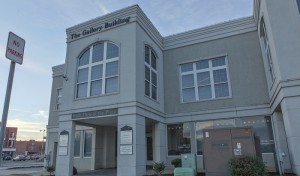
By Brad Gillis of DEVRECO
The concept is not complex and can translate across all industries. Efficiency grows, in production and in operations, as size increases. It can be demonstrated with a simple example – Imagine you are opening up a pizza shop and you need to print menus. Your printer quotes you $5,000 for 500 menus and $10,000 for 2,500 menus. While 500 cost you $10 per menu, ordering 2,500 will only cost you $4 per menu. In this case, the printer is passing on part of the cost advantage of printing a larger number of menus to you. This cost advantage arises because the printer has the same initial set-up cost regardless of whether the number of menus printed is 500 or 2,500. Once these costs are covered, there is only a marginal extra cost for printing each additional menu.
Economies of scale arise because of the inverse relationship between the quantity produced and per-unit fixed costs. The greater the quantity of a good produced, the lower the per-unit fixed cost because these costs are shared over a larger number of goods. I use the word “goods” because it can relate to anything from those pizza shop menus to coffee beans to real estate.
When it comes to real estate, the fixed cost is shared between a laundry list of necessary and mandated services.
- Public works

- Connection fees
- Traffic light fees
- Water and sewer installation inspection fees
- Cost benefit analysis
- Annexation fees
- Planning review fees
- Ordinance fees
- Capacity fees, based on MDE requirements
- Fire Marshal review fees
- Building permit fees
- Plan review fees
- Easements – getting infrastructure from point A to point B
And the list goes on… and on.
Developers take into account the hard costs (sticks and bricks) and site work and the soft costs which covers the fees listed above, public works, the architect, engineer and water and sewer. The goal within the site infrastructure is to distribute the costs over as many square feet as possible.
A good economies of scale comparison involves the installation cost for an elevator – a fixed cost. The elevator installed in the Gallery building in downtown Salisbury services three floors. The elevator installed in the 20,000 square foot Sperry Van Ness offices just down the street only services one additional floor that is 10,000 square feet. The cost for the elevator is the same in both buildings but can be spread out over more square feet in the Gallery building than the SVN office building.
Another example of economies of scale would be the installation of an entrance to a development. A $200,000 entrance build-out wouldn’t make sense for one individual building. But if a new entrance would benefit and serve multiple buildings and businesses, while the initial cost of the project would be significant, it can be well worth the investment when developers can ultimately capitalize on future phases of the project as the development grows over time.
Developers take many different factors into account before pushing the “Go” button and taking a risk. From duration of a project to approval agencies, process and cost, developers coordinate and convert ideas on paper into real property. We orchestrate the process of development from beginning to end. Developers take the greatest risk in the creation and renovation of real estate and receive the greatest rewards. Our expertise tells us that without economies of scale we can’t provide a marketable and affordable product to you – the end user.



